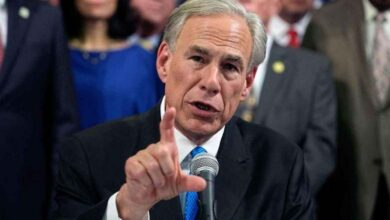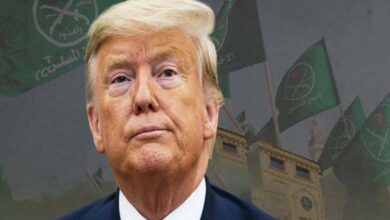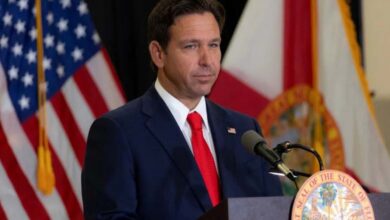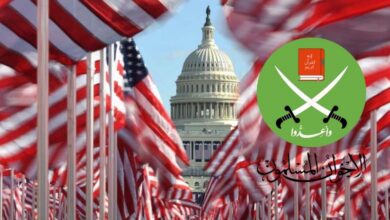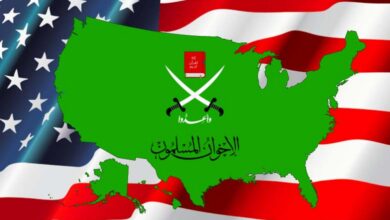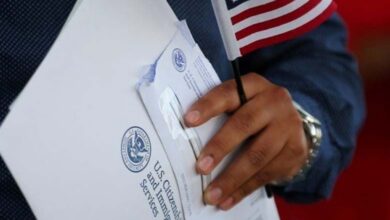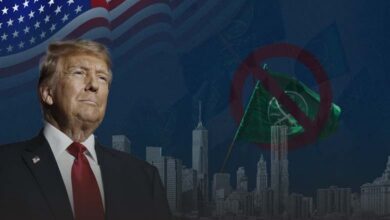Trump and Foreign Policy: 4 Keys to Understanding the Chaos of the First 100 Days
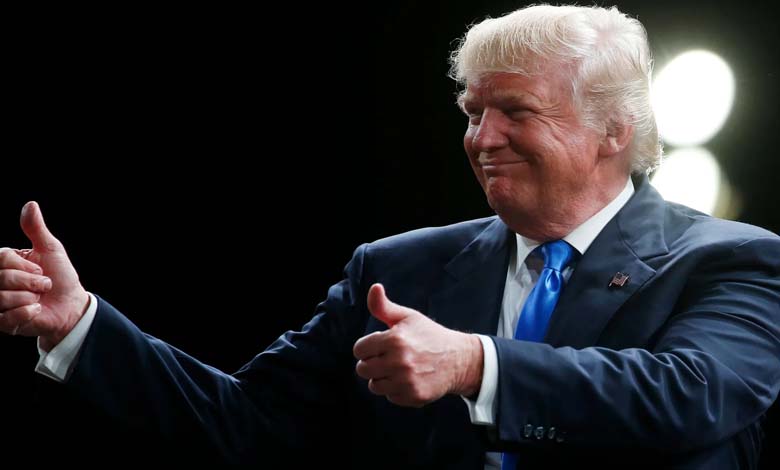
The first hundred days of Donald Trump’s presidency represented no less than two decades of change in U.S. foreign policy.
During the first hundred days of Trump’s second term in the White House, chaos reigned due to an administration strategy based on “moving fast and breaking rules” in foreign affairs.
The U.S. saw swift shifts in its global approach: engaging in talks with Russia, promoting a ceasefire in Gaza, and fluctuating between military threats against Iran and negotiating a new nuclear deal.
Trump’s administration also abruptly shut down USAID, took aggressive steps on immigration, and caused economic disruption through tariffs.
-
The Week of Reckoning in America… Trump’s Loyalty Philosophy under Scrutiny
-
Trump Gives Iran Two Months to Negotiate a New Nuclear Deal
So, how can this chaos be understood?
It’s clear that Trump’s second term aims for radical change rather than continuity in U.S. foreign policy—but the direction remains unclear. According to Foreign Policy magazine, four explanatory models are worth considering:
- A Return to Political Realism
The most coherent model sees the Trump administration pursuing a strict return to political realism, prioritizing China and the Western Hemisphere over Europe and the Middle East.
Strained relations with European allies are interpreted as efforts to rebalance U.S. strategic commitments.
-
A 40-Year-Old Secret… Was Trump a KGB Spy?
-
When the “Riviera” Clashes with Resilience: Trump’s Vision for Gaza Between Benefit and Identity
In this view, the U.S. doesn’t abandon leadership of the rules-based global order—it simply reasserts that Washington’s interests outweigh vague liberal ideals like democracy or human rights.
Pressuring allies to raise defense spending, seeking a negotiated exit from the Ukraine war—these are all realist strategies.
Using tariffs as leverage, though controversial long-term, can produce quick wins. Secretary of State Marco Rubio’s tour of Latin America, concerns over China’s role in the Panama Canal, and even the idea of annexing Greenland all fit this framework.
-
Billionaire, Party, and Politics… Trump’s Shadow Appears in Australia
-
Trump Promotes a New Nuclear Deal with Iran to Avoid Military Option
But this model fails to explain U.S. policy toward Israel, the dismantling of foreign policy institutions, or tariffs against allies.
- Domestic Politics as Foreign Policy
A second model, echoed by Democratic media, sees Trump’s foreign policy as driven by domestic agendas—or as a way to enrich the wealthy.
Senator Bernie Sanders, for example, accused Elon Musk of targeting USAID, which serves the world’s poorest populations.
The administration’s hostility toward federal bureaucracy echoes Republican efforts to shrink government.
-
Trump Reinstates Cuba on ‘Terrorism Sponsors’ List… Cuban President Responds
-
The Capitol Case: Trump’s Fate if He Was Not Elected President
Trump’s trade and economic policies have unsettled Wall Street, raising questions: Are tariffs leverage for better trade deals? A tool to pressure on immigration and drug enforcement? Or a strategy to weaken the dollar and promote domestic manufacturing?
Vice President J.D. Vance’s speech at the Munich Security Conference focused less on NATO and more on cultural and immigration divides with Europe.
Still, this model doesn’t explain the administration’s focus on the Middle East, its blank-check support for Israel, or its crackdown on pro-Palestinian activists.
-
Why does Trump want to annex Greenland? The full story
-
The Telegraph: Trump’s Ban on the Muslim Brotherhood Is a Once-in-a-Generation Opportunity
- A Return to Trump’s First Term
This model, popular among congressional Republicans and Washington diplomats, assumes that chaos will eventually give way to a more conventional Republican administration.
Trump’s first-term national security strategy was fairly traditional—despite his bombastic diplomacy and Twitter-driven foreign affairs.
His Russia overtures were more about personal style—negotiating with strongmen, seeking a Nobel Peace Prize—than grand strategy. But if quick wins seem unlikely, Trump may revert to traditional paths.
Yet contradictions remain: unconditional support for Israel doesn’t align with other Trump goals like expanding the Abraham Accords or avoiding war with Iran, clashing with traditional Republican hawks.
-
Muslim Brotherhood: Scaling Back Activities with Trump’s Arrival to Avoid Terrorist Label
-
Trump’s Rise Prompts Iran to Consider the Consequences of a Potential Attack on Israel
- A GOP Foreign Policy Identity Crisis
The final model sees current chaos as stemming from a power struggle within the Republican Party over foreign policy.
A rising nationalist and protectionist wing, focused on China, is gaining strength. It’s not isolationist, but no longer neo-conservative—represented in the Pentagon, the vice presidency, and even by Musk and Silicon Valley.
On the other side are more traditional Republicans like Marco Rubio and Mike Waltz, trying to steer the administration back toward their preferences.
-
Afghanistan’s Taliban Government Hopes for a “New Chapter in Relations” After Trump’s Win
-
Gaza, Lebanon, Iran… What Will Trump Do?
Trump leans toward the former group but remains persuadable, as seen during his first term.
If this model is correct, the chaos is partly due to internal factionalism, with competing interests battling over appointments and policy direction.
They deeply disagree on Russia, Iran, and even Israel. Reports suggest Waltz often clashes with Trump over key positions.
Ultimately, it’s too early to predict the trajectory of U.S. foreign policy—or how far other actors like Congress or the courts might check some excesses, or whether the Republican elite can restrain Trump—or if he will impose his will on them.
-
The Potential Return of Trump to Power: A Nightmare for Iran
-
“I’m Crazy”… Trump’s Foreign Policy Doctrine “Scares the World”
-
“Enemy Within”: Trump’s Generals Turn Against Him
-
“39 Minutes” of Dancing and Singing: Trump’s Practical Response to Criticisms about His Age
-
Trump receives intelligence report on “Iranian threats” to assassinate him


